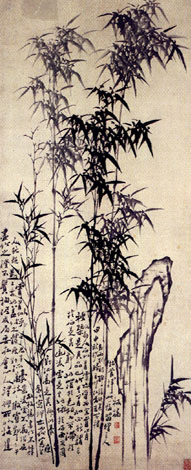
Matrilineal societies
|
One womb
A few interesting aspects of matrilineal societies in Asia.
"One womb" is a phrase most matrilineal societies use to describe family or brothers and sisters. This term mirrors the biblical saying "the seed (in Hebrew seed is synonymous with semen) of Abraham" from which the big monotheistic nations sprouted from. "One womb" represents the unity of the clan through a female ancestor, and the inheritance laws that prefer female descendents. This enhances women's authority and power in their family environment. Although these societies do not have female leadership, women do enjoy a relatively high status.
The institutions of matrimony and fatherhood used to be considered universal, until the academic world was acquainted with the matrilineal societies. These institutions are less emphasized in matrilineal societies, because every child is considered to belong to the mother's family. This means that there is little or no dependency on husbands and fathers. This fact allows these societies to be relatively liberal when it comes to sexual encounters before marriage, and even during marriage. Divorce is a common practice, and the happiness of the individuals is more sacred than the union of husband and wife. Each society has different ways to solve society's ins and outs, and many curious and complicated customs have been established. For instance: The Garo of Northeast India have a man marry his mother in-law.
The Musuo of southwest China have an institution of "visiting husbands". Many years ago the Nair of South India still performed a ceremony considered by anthropologists to mock marriage. This custom does not exist with the Nair any more, but a similar rite is still carried out with the Newar of Nepal who are thought to be from the same origin. Their young girls participate in a ceremony in which they marry a fruit.
The Minangkabau of West Sumatra are devout Muslims but have found a way to merge the conflicting rules of Islam and matriliny. When a daughter is ready to marry, her family buys her the groom for a trial period. If she doesn't like him, she simply puts his shoes or bedding outside the door, and he goes back to his mother's home. The Bhutanese have a "night hunting" custom in which the young men climb through the windows of their girlfriends. If the young visitor stayed there until morning, they will be considered married. These societies have been under great pressure to change, and the Khasi men of Northeast India are trying to do just this at the moment. They have formed a "men's emancipation movement" in order to change the system, and bitter feelings are expressed about inequality in the distribution of property. This process has been shared in many other matrilineal societies in the past.
I have been researching matrilineal societies for many years, and in the pictures I have taken appear among others, the Khasi King of Northeast India, and the Princess of Travancore from Kerala in South India, both of whom I had the privilege of interviewing. I write and lecture about these societies, in hope that the message of alternative lifestyles is available in different cultures around the world.
These findings can be added to the ongoing debate about the question of if there ever was a matriarchal society.
|
|
|
|
|

Home page - דף הבית

להזמנות: 0544693323
dina.heimann@gmail.com
|
